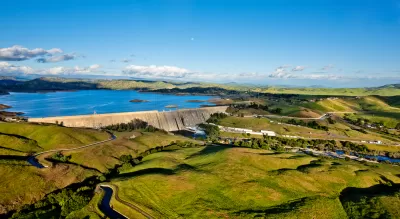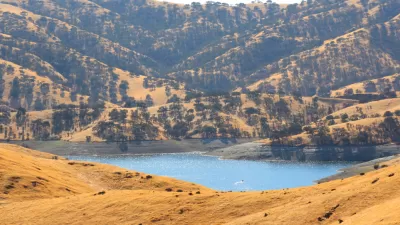The Temperance Flat Reservoir Project might be falling too far behind schedule to maintain a huge chunk of state funding, according to reports.

The more than $171 million the Temperance Flat Reservoir Project received in 2018 from the state of California's Water Storage Investment Program came with a few strings attached. On January 22, the project would be required to have "completed feasibility studies, a draft version of the environmental documents released for public review, and commitments for at least 75% of non-program funding," according to an article by Chris Austin (commonly known as Maven).
"Each quarter, applicants submit a report informing the Commission of project status as it relates to the Prop 1 requirements. In recent quarterly reports, the Temperance Flat Reservoir Authority has indicated that it is evaluating its ability to achieve the prescribed schedule," reports Maven.
The entire project will require more than $3 billion to essentially add a dam to an existing reservoir—Millerton Lake, which is created by Friant Dam on the San Joaquin River. "The basic facility would be a new dam in Millerton Lake and a new powerhouse that would generate hydropower as water is released from Temperance Flat into Millerton Lake, essentially impounding water upstream to the downstream face of Kerckhoff Dam, a PG&E power facility," according to Maven. The project would provide a total of 1.8 million acre-feet of water storage capacity when combined with Millerton Lake.
In typical Maven style, the article provides nearly comprehensive detail of the planning and construction details of the project, as well as a path forward for the project to stay on schedule.
FULL STORY: Water Storage Investment Program: Temperance Flat Reservoir Project Status Update

Alabama: Trump Terminates Settlements for Black Communities Harmed By Raw Sewage
Trump deemed the landmark civil rights agreement “illegal DEI and environmental justice policy.”

Study: Maui’s Plan to Convert Vacation Rentals to Long-Term Housing Could Cause Nearly $1 Billion Economic Loss
The plan would reduce visitor accommodation by 25% resulting in 1,900 jobs lost.

Why Should We Subsidize Public Transportation?
Many public transit agencies face financial stress due to rising costs, declining fare revenue, and declining subsidies. Transit advocates must provide a strong business case for increasing public transit funding.

Paris Bike Boom Leads to Steep Drop in Air Pollution
The French city’s air quality has improved dramatically in the past 20 years, coinciding with a growth in cycling.

Why Housing Costs More to Build in California Than in Texas
Hard costs like labor and materials combined with ‘soft’ costs such as permitting make building in the San Francisco Bay Area almost three times as costly as in Texas cities.

San Diego County Sees a Rise in Urban Coyotes
San Diego County experiences a rise in urban coyotes, as sightings become prevalent throughout its urban neighbourhoods and surrounding areas.
Urban Design for Planners 1: Software Tools
This six-course series explores essential urban design concepts using open source software and equips planners with the tools they need to participate fully in the urban design process.
Planning for Universal Design
Learn the tools for implementing Universal Design in planning regulations.
Smith Gee Studio
Alamo Area Metropolitan Planning Organization
City of Santa Clarita
Institute for Housing and Urban Development Studies (IHS)
City of Grandview
Harvard GSD Executive Education
Toledo-Lucas County Plan Commissions
Salt Lake City
NYU Wagner Graduate School of Public Service




























